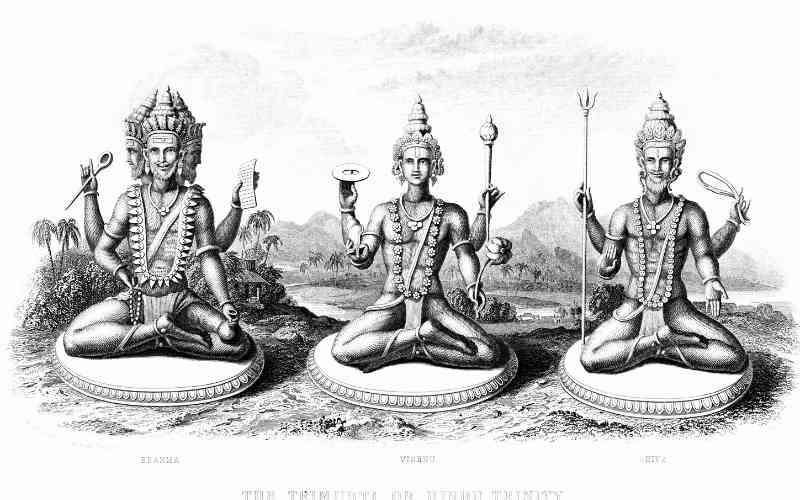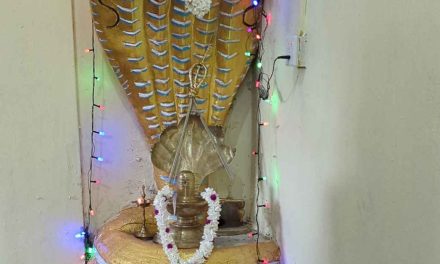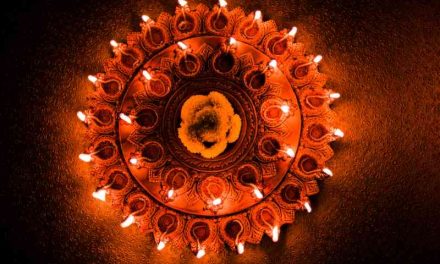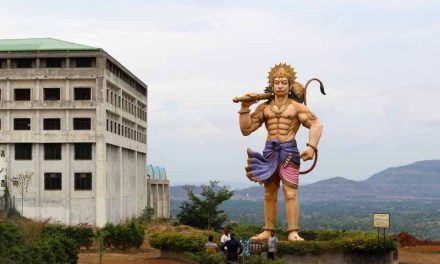India’s rich spiritual heritage is a tapestry woven from various philosophical and religious traditions. Among the many sacred texts that have emerged from this tapestry, the Mantrika Upanishad stands out as a remarkable synthesis of four prominent schools of thought: Samkhya, Yoga, Vedanta, and Bhakti. This Upanishad offers profound insights into the nature of reality, the path to liberation, and the significance of devotion, bridging the gaps between these diverse philosophical systems.
Samkhya: The Foundation of Understanding
The Mantrika Upanishad begins by laying the groundwork through Samkhya philosophy. Samkhya, one of the six classical schools of Indian philosophy, provides a framework for understanding the dualistic nature of reality. It posits the existence of two fundamental principles: Purusha (consciousness) and Prakriti (matter). In the Mantrika Upanishad, this duality is presented as the starting point for seekers to grasp the fundamental question of ‘Who am I?’
The text expounds that the true Self (Atman) is distinct from the material world and that realizing this distinction is the first step on the path to spiritual realization. This Samkhyan perspective helps seekers recognize the impermanence of the physical world and the eternal nature of the Self.
Yoga: The Journey Within
Building upon the Samkhyan foundation, the Mantrika Upanishad delves into Yoga, a practical system for uniting the individual soul with the universal consciousness. Yoga is a systematic path to inner realization, and this Upanishad emphasizes the importance of meditation, concentration, and self-discipline as integral components of the yogic journey.
The Upanishad elucidates the different stages of meditation and the techniques for reaching a state of profound inner tranquility and self-realization. It encourages seekers to go beyond the superficial layers of existence, unveiling the infinite potential within each individual.
Vedanta: The Quest for Ultimate Knowledge
Vedanta, another of India’s philosophical jewels, emphasizes the pursuit of ultimate knowledge (jnana) to transcend the cycle of birth and death. The Mantrika Upanishad seamlessly integrates Vedantic principles into its teachings by emphasizing the realization of the unity between the individual soul (Atman) and the cosmic consciousness (Brahman).
The Upanishad elucidates the concept of “Neti Neti” or “Not this, Not this,” which guides seekers to negate all that is transient and unreal to uncover the eternal truth. Through Vedantic wisdom, the text encourages a profound shift in perspective from identification with the body and mind to the recognition of one’s divine essence.
Bhakti: The Path of Devotion
In the Mantrika Upanishad, Bhakti, the path of loving devotion, is presented as the culmination of the spiritual journey. Bhakti bridges the gap between the intellectual pursuit of knowledge and the experiential realization of divinity. It emphasizes the profound love and surrender to the Supreme Being as a means to attain liberation.
The text extols the importance of devotion as a means to overcome ego and dissolve the sense of separateness. Through Bhakti, one transcends the duality of the individual self and the universal Self, merging into the divine with unwavering love and devotion.
The synthesis of these four philosophical traditions in the Mantrika Upanishad highlights the richness of India’s spiritual heritage and offers a comprehensive approach to self-realization. It acknowledges that different individuals are drawn to different aspects of these traditions, and each path has its unique merits.
The Mantrika Upanishad in Practice
Practitioners of the Mantrika Upanishad are encouraged to integrate the teachings of Samkhya, Yoga, Vedanta, and Bhakti into their spiritual practices. This integration allows for a holistic approach to self-discovery and liberation, catering to the diverse needs and inclinations of seekers.
For example, someone inclined towards self-inquiry might start with Samkhya and Vedanta, focusing on understanding the nature of the self and the ultimate reality. On the other hand, a practitioner with a devotional disposition might primarily follow the Bhakti path, nurturing a deep and loving relationship with the Divine.
The Mantrika Upanishad does not prescribe a rigid set of practices but offers a flexible and inclusive framework for spiritual growth. It encourages seekers to explore these paths in harmony and balance, recognizing that the synthesis of these traditions can lead to a deeper, more profound understanding of the self and the universe.
Mantrika Upanishad: A Guide to the Power of Mantras
The Upanishad begins by describing the origin of mantras from the Supreme Brahman, the ultimate reality. It says that Brahman created the four Vedas from his four mouths, and from each Veda he produced a mantra. The mantra of the Rig Veda is OM, the mantra of the Yajur Veda is HUM, the mantra of the Sama Veda is SOHAM, and the mantra of the Atharva Veda is PHAT. These four mantras are called the maha-vakyas, or the great utterances, because they contain the essence of the Vedas and reveal the identity of Brahman and the individual self.
The Upanishad then explains the meaning and significance of each mantra. OM is the most important and universal mantra, as it represents Brahman in all its aspects. It is composed of three sounds: A, U and M, which correspond to the three states of consciousness: waking, dreaming and deep sleep. OM also symbolizes the three deities: Brahma, Vishnu and Shiva, who are responsible for creation, preservation and destruction. OM is said to be the sound of creation, as it emanates from Brahman’s breath. By chanting OM, one can attune oneself to Brahman and attain peace and bliss.
HUM is the mantra of Yajur Veda, which deals with rituals and sacrifices. HUM is also known as the bija-mantra, or the seed-mantra, because it contains the potential to generate other mantras. HUM is associated with Shiva, who is the destroyer of ignorance and evil. HUM is said to be the sound of dissolution, as it destroys all obstacles and illusions. By chanting HUM, one can invoke Shiva’s power and grace and overcome all difficulties and fears.
SOHAM is the mantra of Sama Veda, which deals with music and melody. SOHAM is also known as the hamsa-mantra, or the swan-mantra, because it resembles the sound of a swan’s breath. SOHAM means “I am That”, which implies that one’s true nature is Brahman. SOHAM is said to be the sound of harmony, as it balances the inhalation and exhalation of breath. By chanting SOHAM, one can realize one’s identity with Brahman and experience joy and freedom.
PHAT is the mantra of Atharva Veda, which deals with magic and medicine. PHAT is also known as the shakti-mantra, or the power-mantra, because it activates the latent energy within oneself. PHAT is related to Durga, who is the goddess of strength and protection. PHAT is said to be the sound of transformation, as it changes one’s condition and destiny. By chanting PHAT, one can awaken one’s inner potential and achieve success and prosperity.
The Upanishad concludes by stating that these four mantras are enough for attaining all kinds of benefits in this world and beyond. It advises that one should chant them with faith, devotion and concentration, following the rules and regulations prescribed by one’s guru or teacher. It also warns that one should not misuse or abuse these mantras for selfish or harmful purposes, as they can have negative consequences. It says that by using these mantras properly, one can attain liberation from the cycle of birth and death and merge with Brahman.
The Mantrika Upanishad is a guide to the power of mantras that can help anyone who wants to improve their life and spirituality. It reveals how mantras are derived from Brahman and how they can connect one with Brahman. It also teaches how to use different mantras for different goals and situations. It is a valuable source of wisdom for those who are interested in learning more about mantras and their effects.
In Conclusion
The Mantrika Upanishad stands as a testament to the inclusivity and richness of India’s spiritual heritage. It synthesizes the diverse philosophies of Samkhya, Yoga, Vedanta, and Bhakti, providing seekers with a comprehensive roadmap for self-realization and liberation.
By embracing the principles of Samkhya to understand the dualistic nature of reality, practicing Yoga to embark on the inner journey, exploring Vedanta for ultimate knowledge, and nurturing Bhakti to foster devotion, individuals can find a path that resonates with their unique spiritual inclinations.
Ultimately, the Mantrika Upanishad reminds us that the pursuit of spiritual wisdom and realization is a deeply personal journey, and by integrating these four philosophical traditions, we can draw from a wellspring of knowledge and guidance on our quest for self-discovery and spiritual enlightenment.





